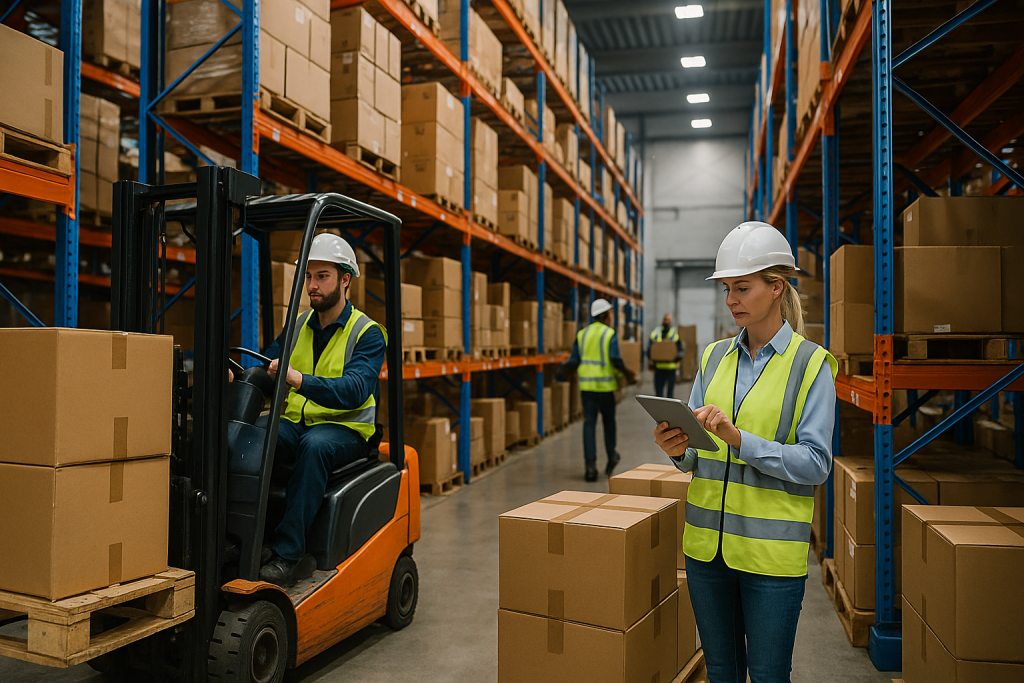By Martin Vassilev / 13 Sep, 2025
Modern warehousing has transformed from a simple storage function into a dynamic driver of regional economic growth. In cities like Calgary and Dallas, both of which are experiencing rapid expansion, warehouses are not only supporting supply chains but also enabling international trade, e-commerce, and advanced manufacturing. These logistics hubs are fueling job creation, technological adoption, and business competitiveness across industries.
This article explores the critical role of modern warehouses in Calgary and Dallas, showing how these facilities shape economic expansion, integrate innovation, and provide businesses with a competitive edge.
Warehouses today serve as multi-functional centers for distribution, fulfillment, and supply chain optimization. In both Calgary and Dallas, modern facilities are designed to reduce costs, speed up delivery, and handle global logistics challenges. By enabling fast-moving consumer goods, retail, oil and gas, and manufacturing sectors, warehousing has become a pillar of local economies.
For example, Calgary’s position as a gateway to Western Canada and Dallas’ reputation as a logistics powerhouse in the Southern U.S. mean that warehouses are essential for bridging domestic and international trade flows.
Modern warehouses attract investment, create thousands of jobs, and foster secondary growth in transportation, retail, and construction. In Dallas alone, logistics and warehousing contributed significantly to the metroplex’s GDP in the past decade. Calgary, with its diverse economic base, has used warehousing to transition from an oil-dependent economy toward a more diversified logistics-driven future.
Cutting-edge automation is redefining warehouse operations in both Calgary and Dallas. Robotics, AI-driven sorting systems, and autonomous guided vehicles allow businesses to reduce human error while maximizing efficiency. According to ByExpress, automation is no longer optional—it’s a necessity for scaling operations and keeping pace with demand.
Warehouses are increasingly leveraging big data analytics to improve inventory accuracy, predict demand spikes, and streamline processes. As outlined in this guide on supply chain optimization, advanced analytics not only save costs but also strengthen resilience against disruptions.
Dallas and Calgary facilities are adopting AI to forecast consumer behavior, optimize route planning, and ensure precise stock replenishment. This reduces carrying costs and prevents stockouts—two critical metrics for business profitability.
Calgary offers access to the Trans-Canada Highway and strong rail connections, linking businesses to Vancouver’s port and beyond. This strategic positioning makes Calgary warehouses crucial for serving both Canadian and global markets. The city’s warehousing growth aligns with its goal of becoming a logistics leader, complementing its growing technology and energy industries.
Dallas’ warehouses benefit from proximity to Mexico, the Gulf of Mexico ports, and major U.S. interstates. This prime location has made Dallas a distribution gateway for North America, particularly for e-commerce giants and manufacturing industries. Modern fulfillment centers here are tailored for high-volume distribution and rapid delivery across the U.S.
With e-commerce continuing to accelerate, warehouses in Calgary and Dallas are increasingly designed as fulfillment centers. These facilities enable same-day or next-day delivery for online orders, meeting rising consumer expectations.
Businesses that fail to adopt fast fulfillment strategies risk falling behind competitors. Insights from ByExpress’ fulfillment strategies highlight how optimized fulfillment directly impacts customer loyalty and retention.
It’s not just big e-commerce brands—small and medium-sized businesses are also taking advantage of modern warehousing. By outsourcing to third-party logistics (3PL) providers, they can scale operations without massive capital investment. This model reduces barriers to entry for entrepreneurs in Calgary and Dallas.
As both cities commit to greener economies, warehouses are adopting sustainable solutions such as energy-efficient lighting, solar power, and optimized HVAC systems. Green logistics practices, like those discussed in this overview of sustainable warehousing, are becoming industry standards.
Government initiatives are encouraging businesses to adopt eco-friendly warehousing. In the U.S., the Environmental Protection Agency (EPA) provides compliance guidelines, while in Canada, Natural Resources Canada promotes energy-efficient building practices. These steps reduce carbon footprints and improve community relations.

Modern warehouses in Calgary and Dallas generate employment for thousands, from forklift operators to data analysts. With increasing automation, the nature of jobs is evolving, but the net effect on local economies remains positive.
As automation expands, workers are being trained in robotics maintenance, inventory analytics, and systems management. Educational institutions in both cities are collaborating with businesses to ensure a skilled workforce is available for the next generation of warehousing.
Warehouse real estate in Dallas has become highly competitive, with demand driving up costs. Calgary is also experiencing tighter availability due to industrial land development constraints. Businesses must carefully evaluate whether to rent or own warehouse space.
Global supply chain volatility, as seen during the COVID-19 pandemic, continues to pose risks. However, distributed warehousing strategies, highlighted in this article, offer solutions to minimize these risks by diversifying storage locations.
Both Calgary and Dallas are positioned for continued expansion as warehousing remains central to trade, e-commerce, and global supply chains. These cities will likely see increased adoption of AI, automation, and sustainable practices in the coming years.
As globalization continues, both cities’ modern warehouses will strengthen ties with international trade partners. Dallas’ proximity to Mexico and Calgary’s link to Pacific trade routes are unique advantages that will drive growth well into the future.
Modern warehouses are far more than storage units—they are economic engines for Calgary and Dallas. From creating jobs and enabling e-commerce to driving sustainability and global trade, these facilities are reshaping regional economies. Businesses that leverage advanced warehousing solutions in these cities will be well-positioned to thrive in competitive markets.
For companies seeking to scale logistics operations in Calgary or Dallas, partnering with a trusted fulfillment and logistics provider is the key to success. Contact ByExpress today to explore comprehensive solutions tailored to your business needs.

“Thanks to Byexpress all my shipping and fulfillment costs are in line now”

“All my issues were solved by Byexpress team that I had with pervious 3pl provider.”

“Thank you Byexpress team could not done it without you guys.”

“Their integration and customer service were the key for me”

“Outstanding delivery service! The package was well-packaged, and
the delivery team was professional and courteous”

“Great and knowledgeable team to work with.”

Thanks, guys, for reducing my shipping rates
Ottawa Office
2411 Holly Lane
Ottawa, ON, K1V 7P2
Toronto Office
13-280 West Beaver Creek Road Unit #136
Richmond Hill, ON, L4B 3Z1
Alexandria Office
173 Kenyon Street West
Alexandria, ON, K0C 1A0
Montreal Office
4388 Saint-Denis Street Unit #200
Montreal, QC, H2J 2L1
California Office
155 North Riverview Drive
Anaheim Hills, CA, 92808
Call Us
Toll-Free: 1-866-744-7122
Local : 613-739-3000
Email Us
Multilingual Services










